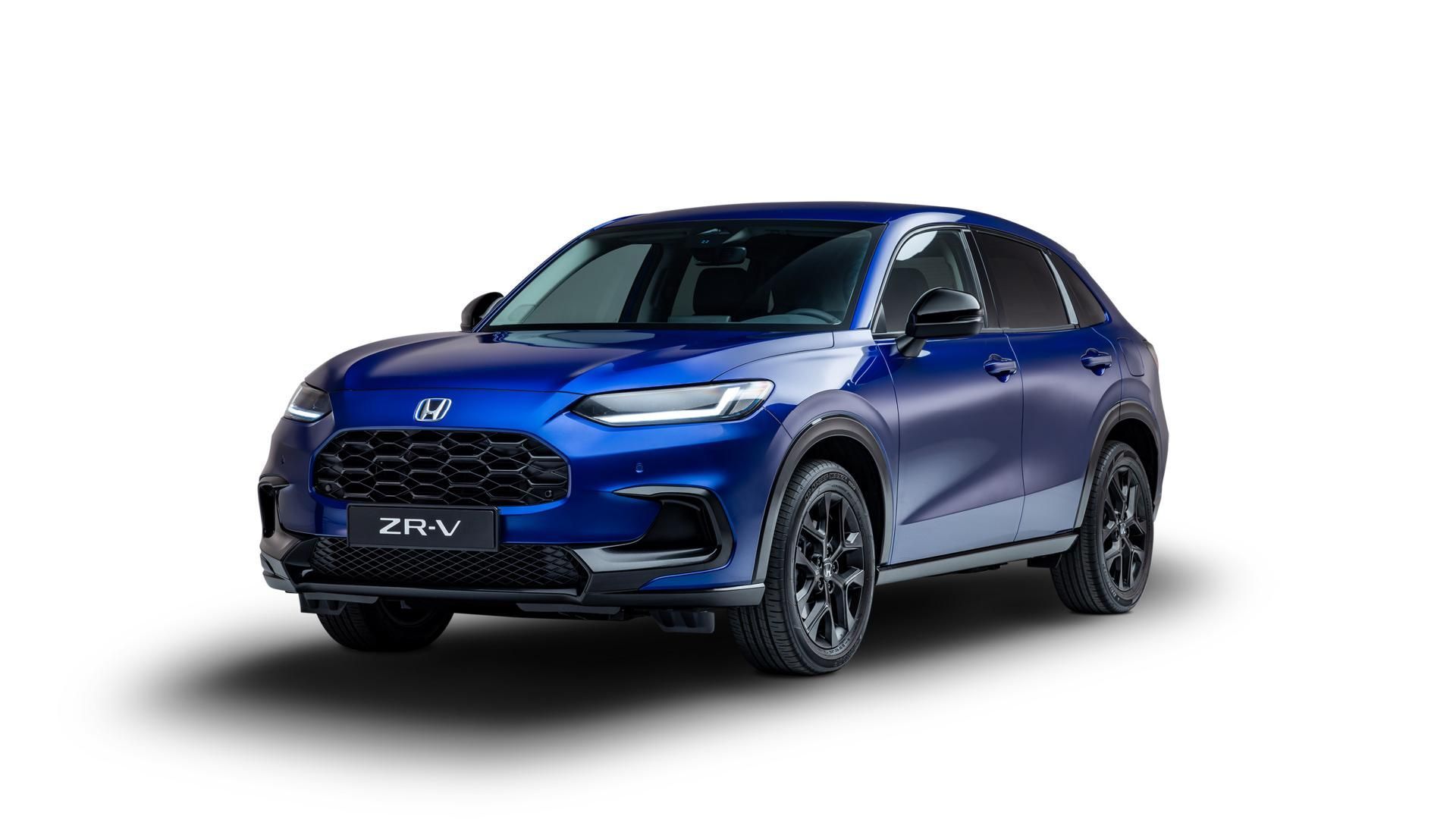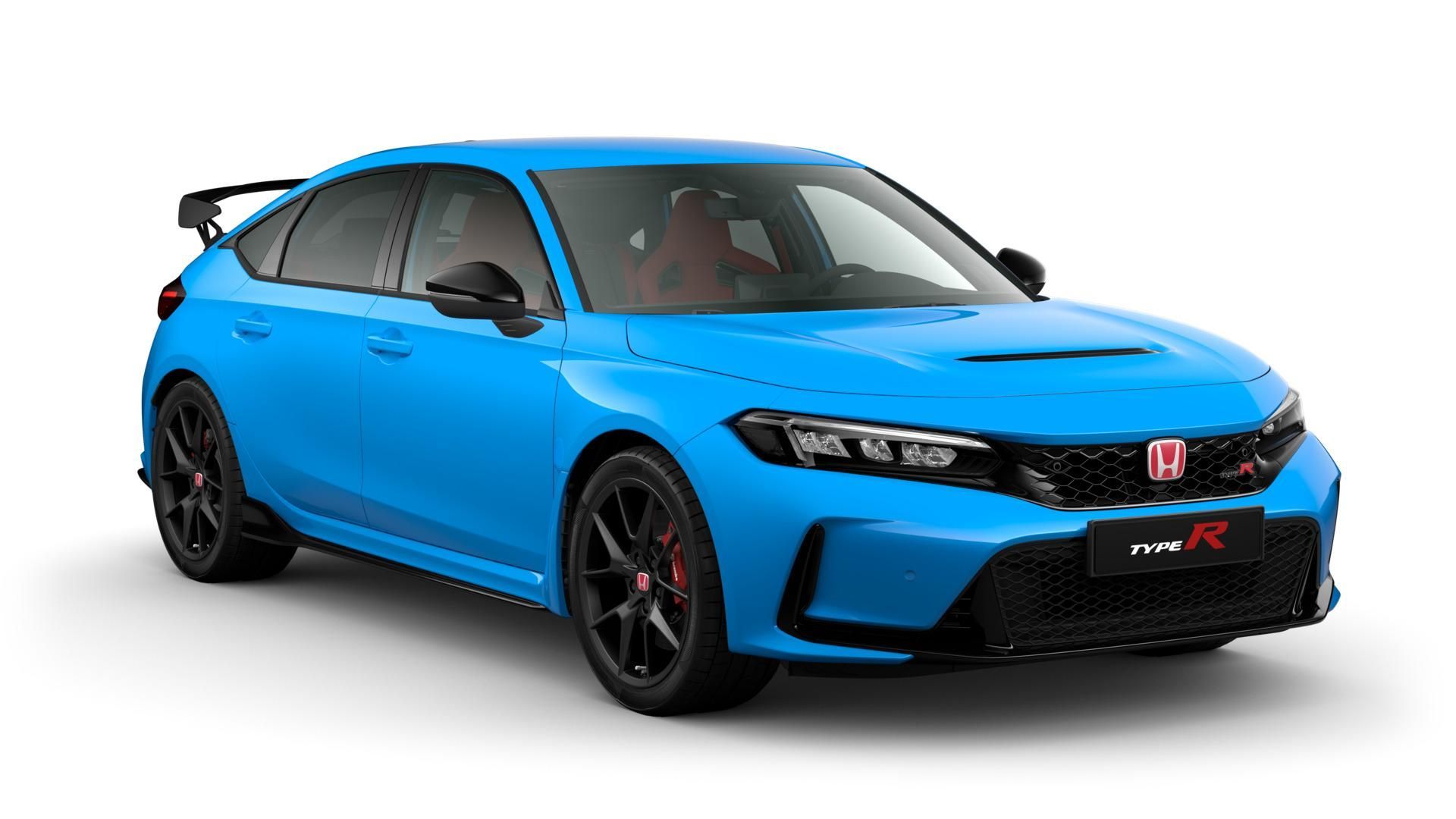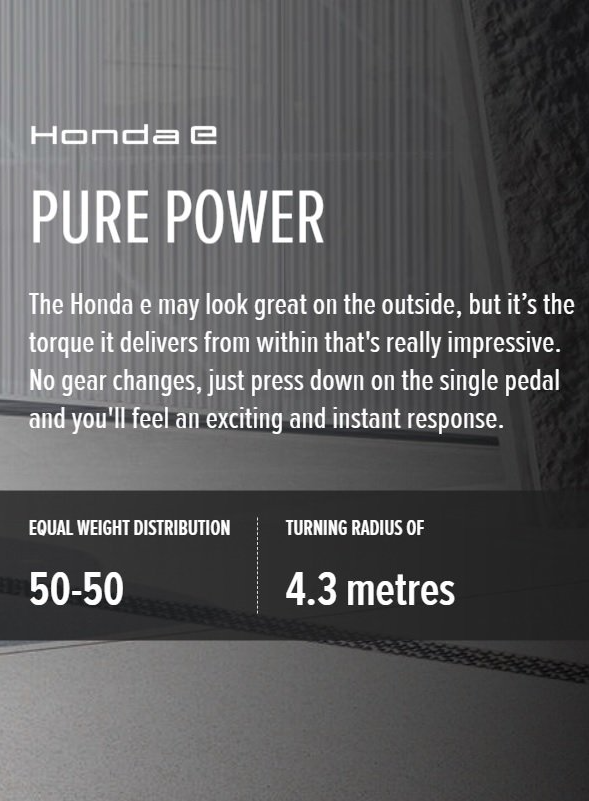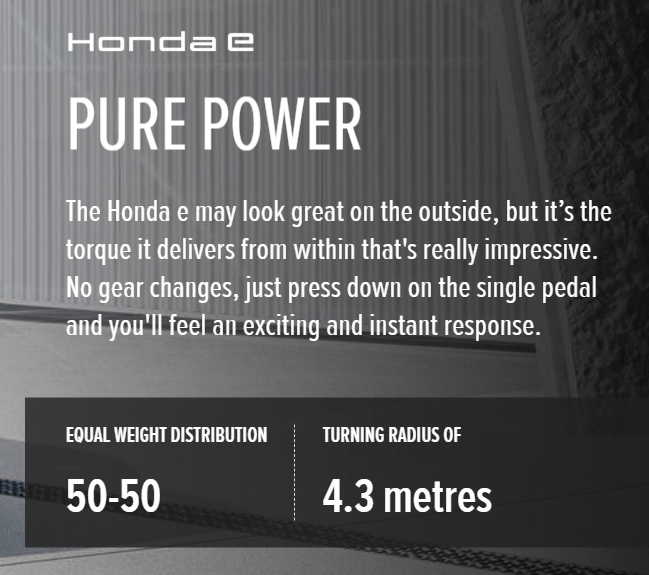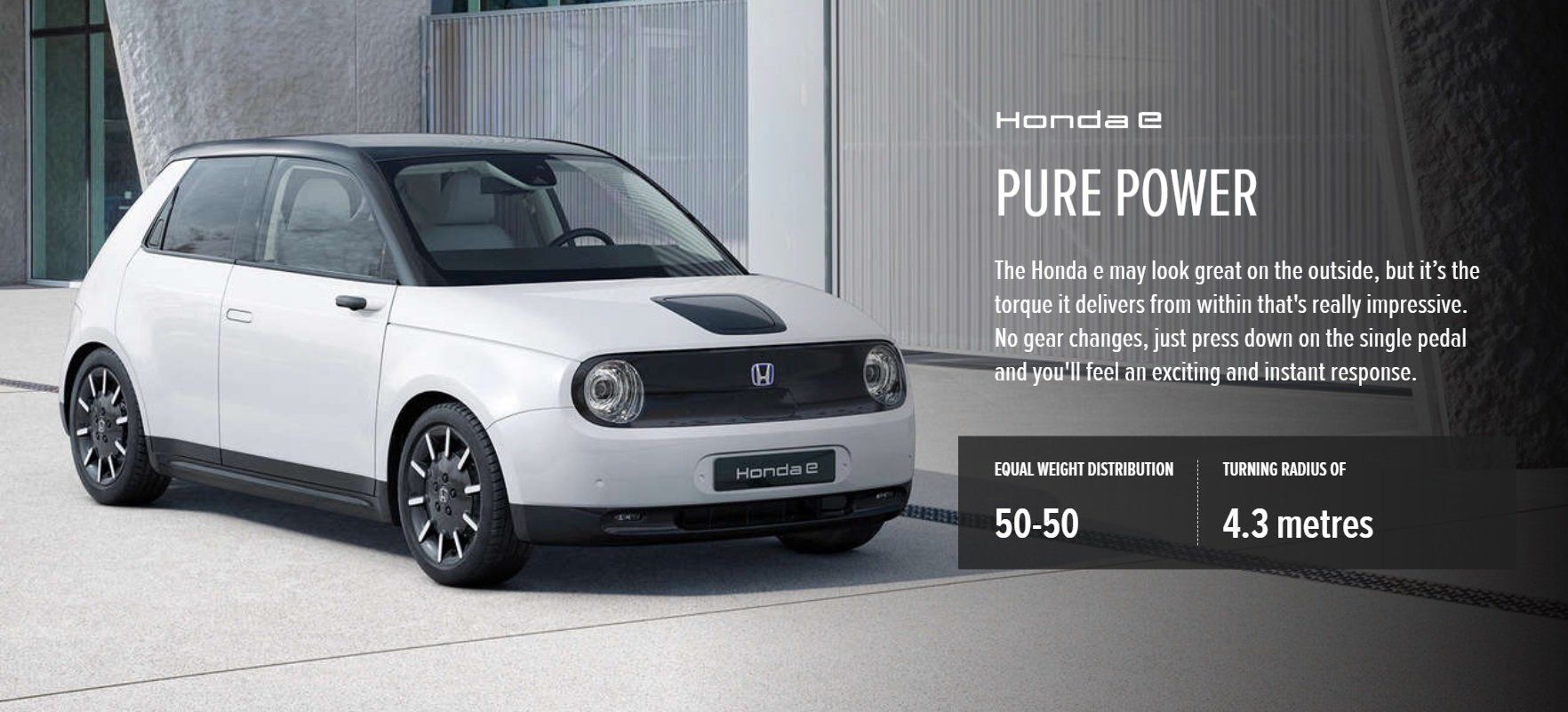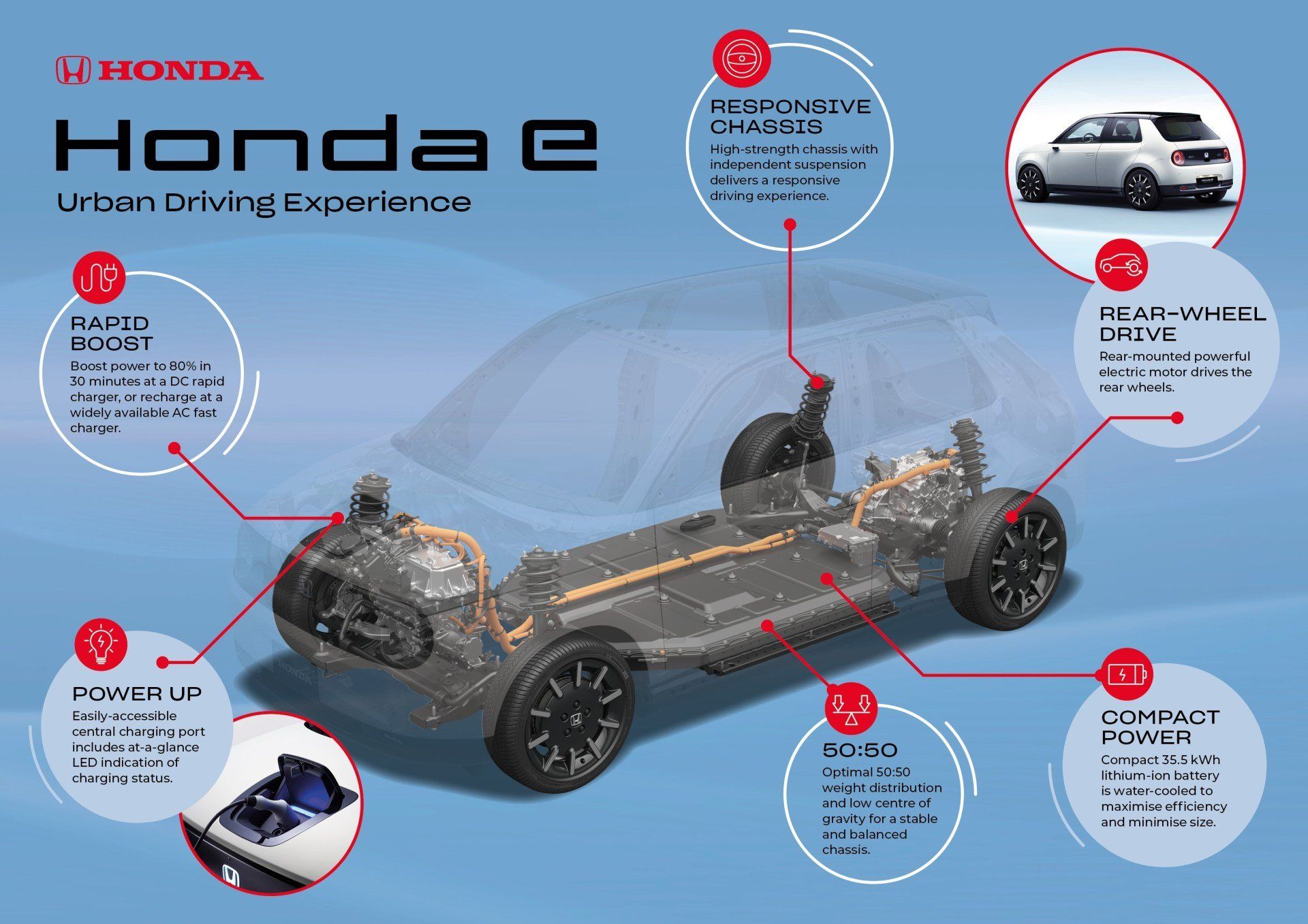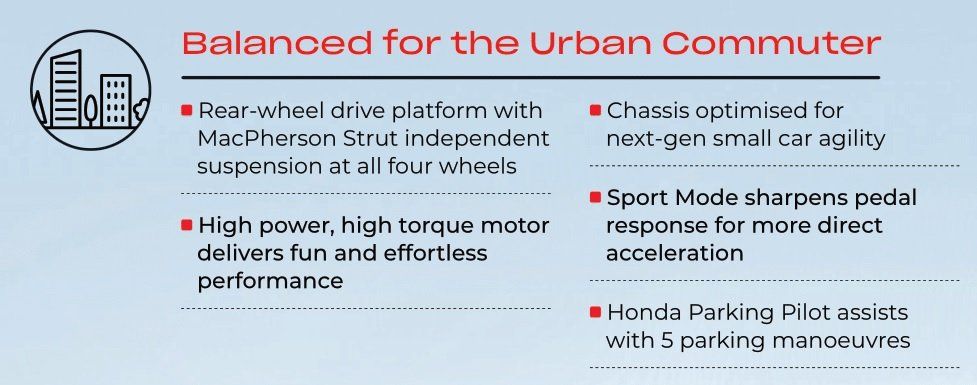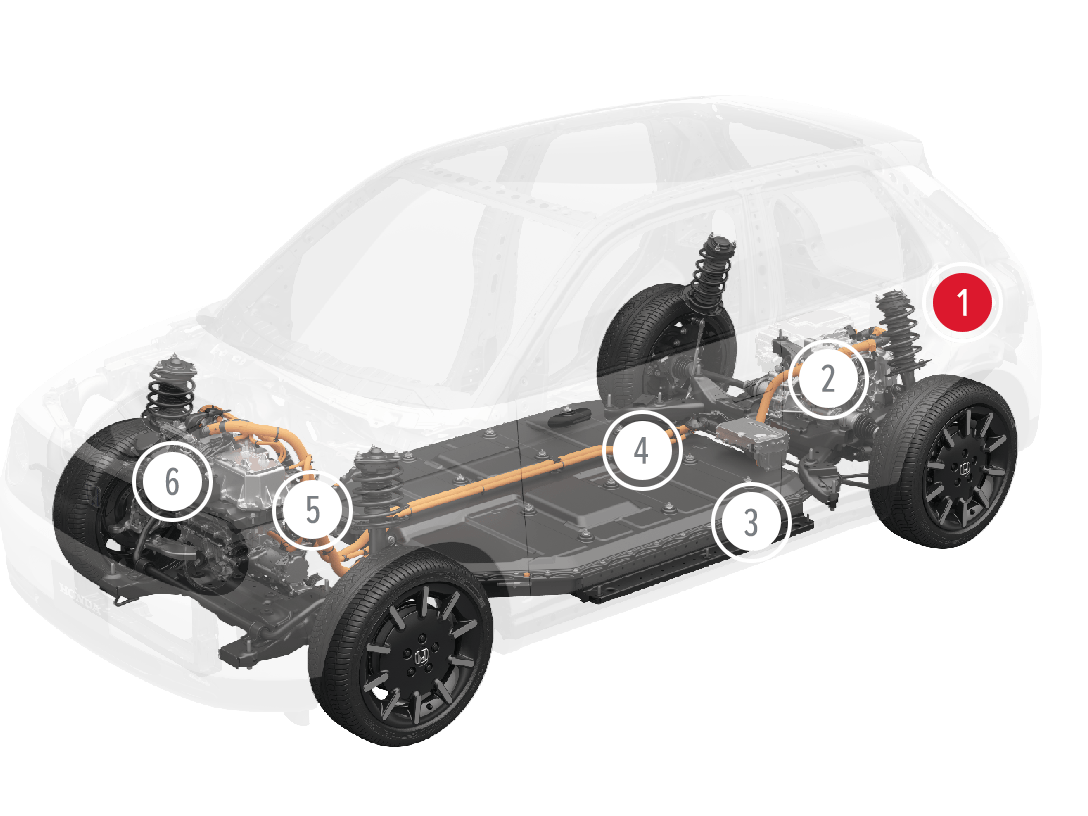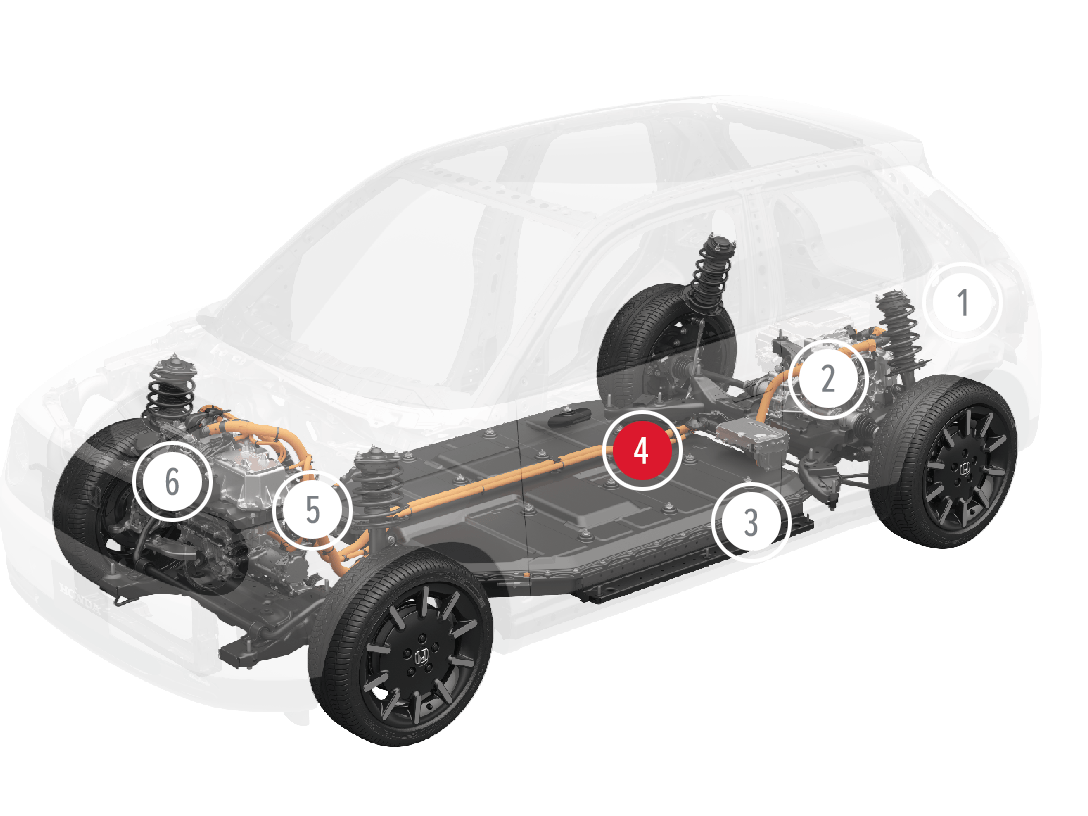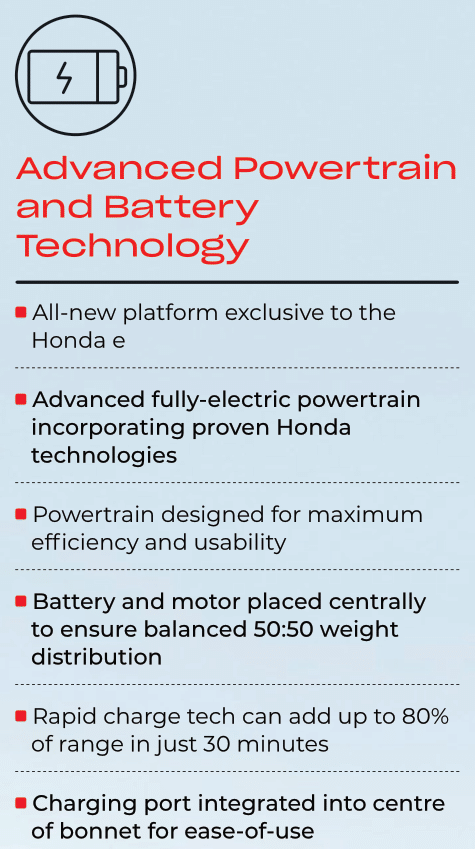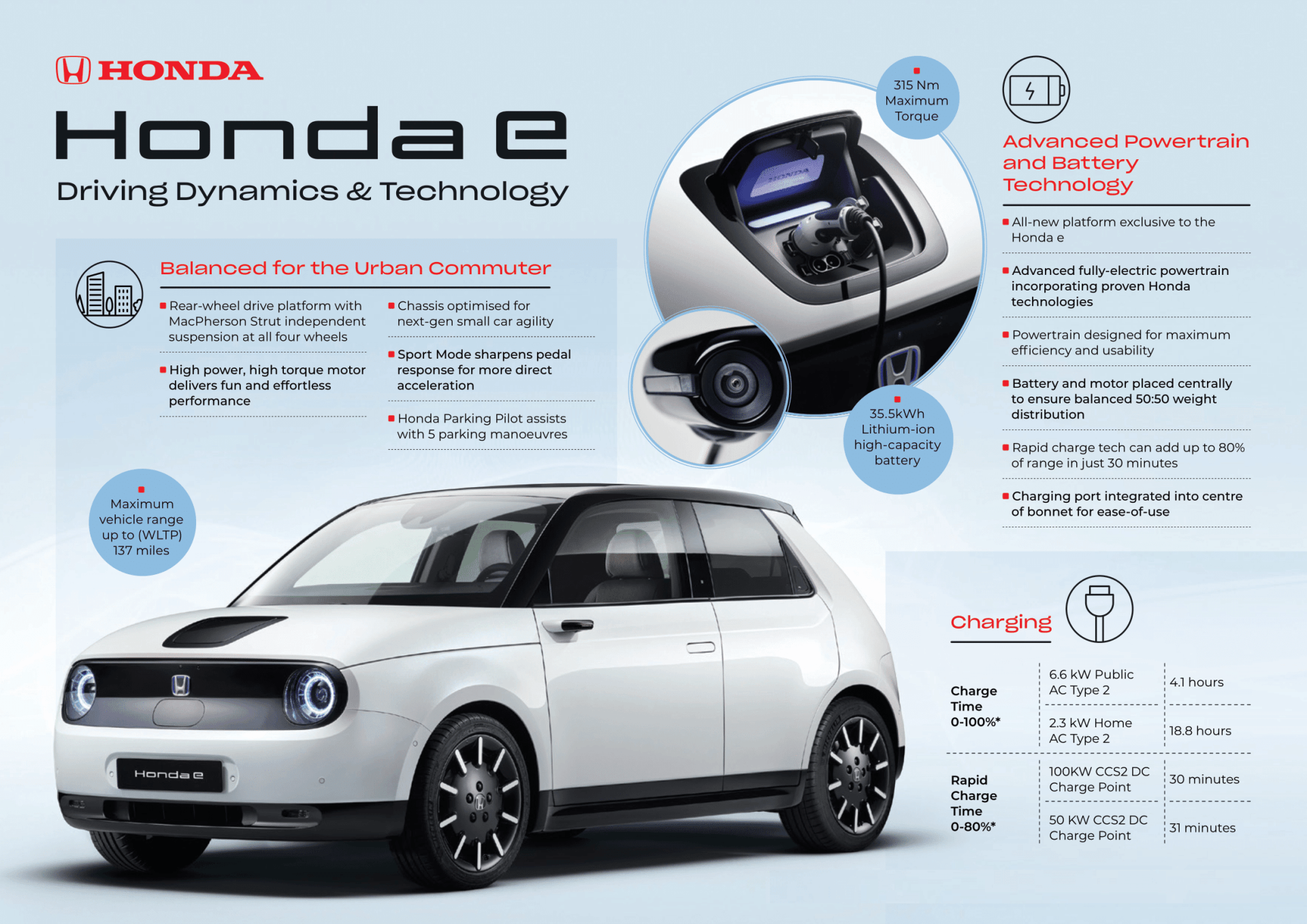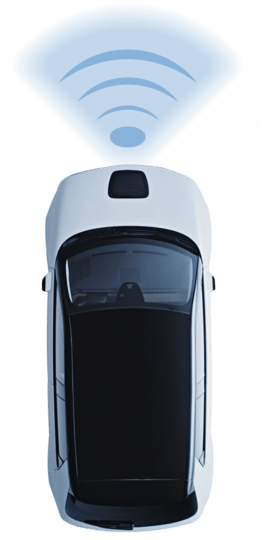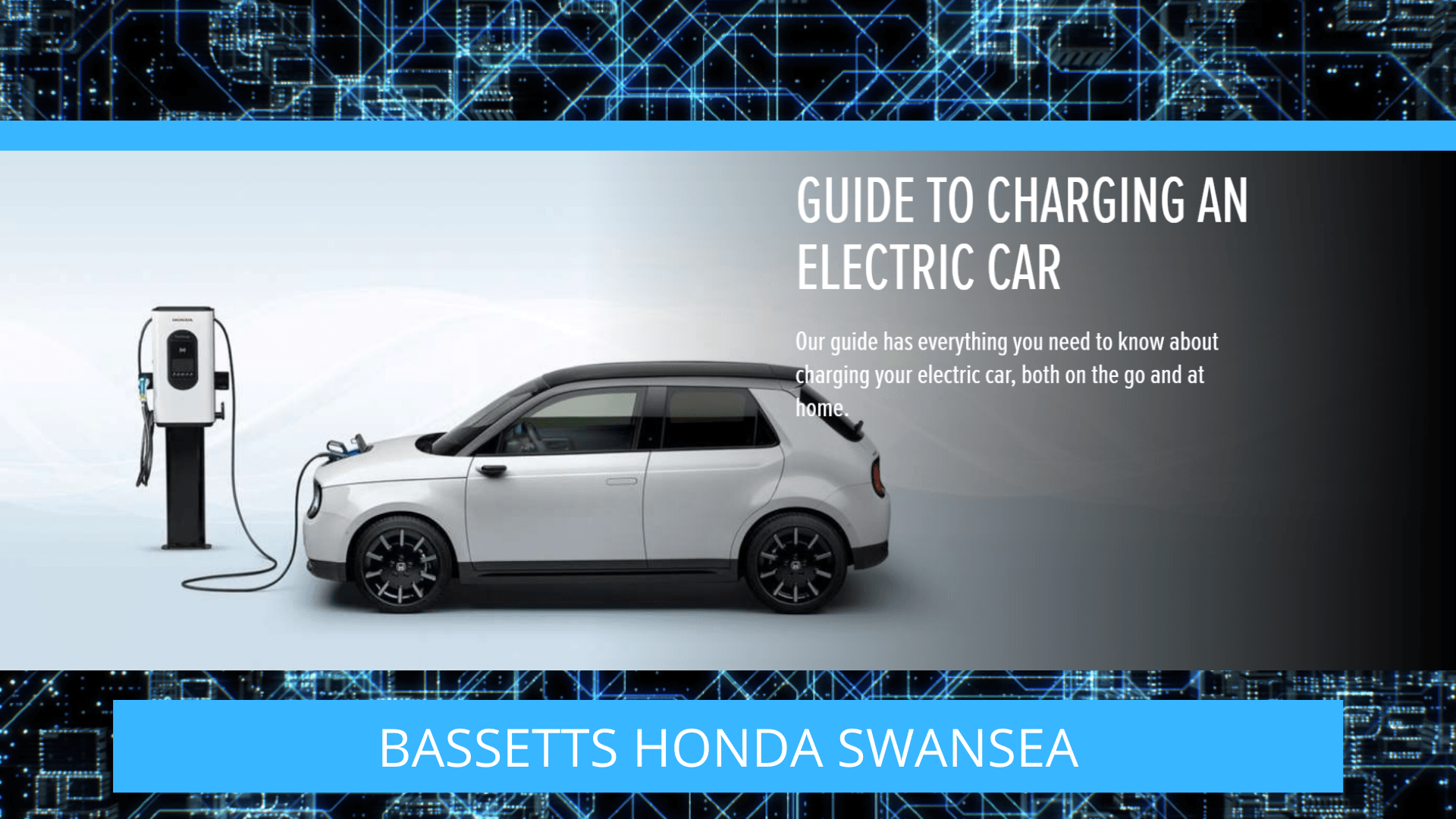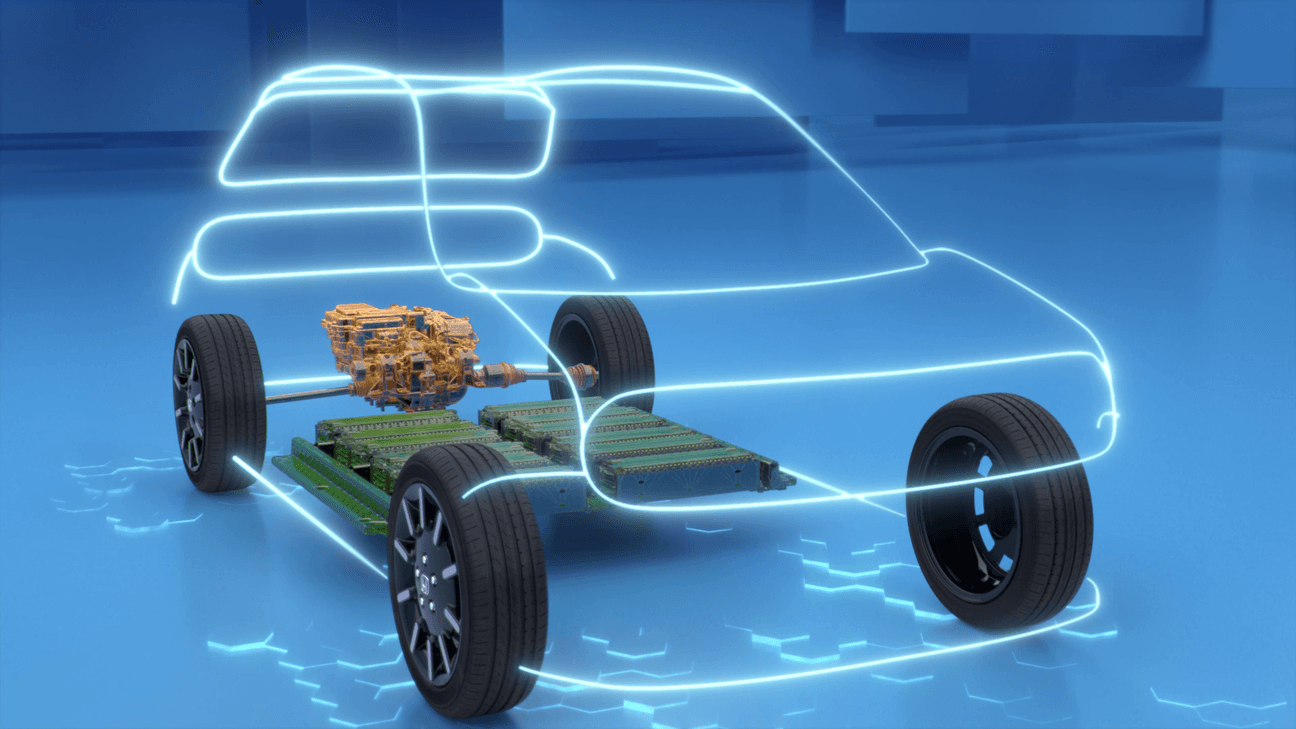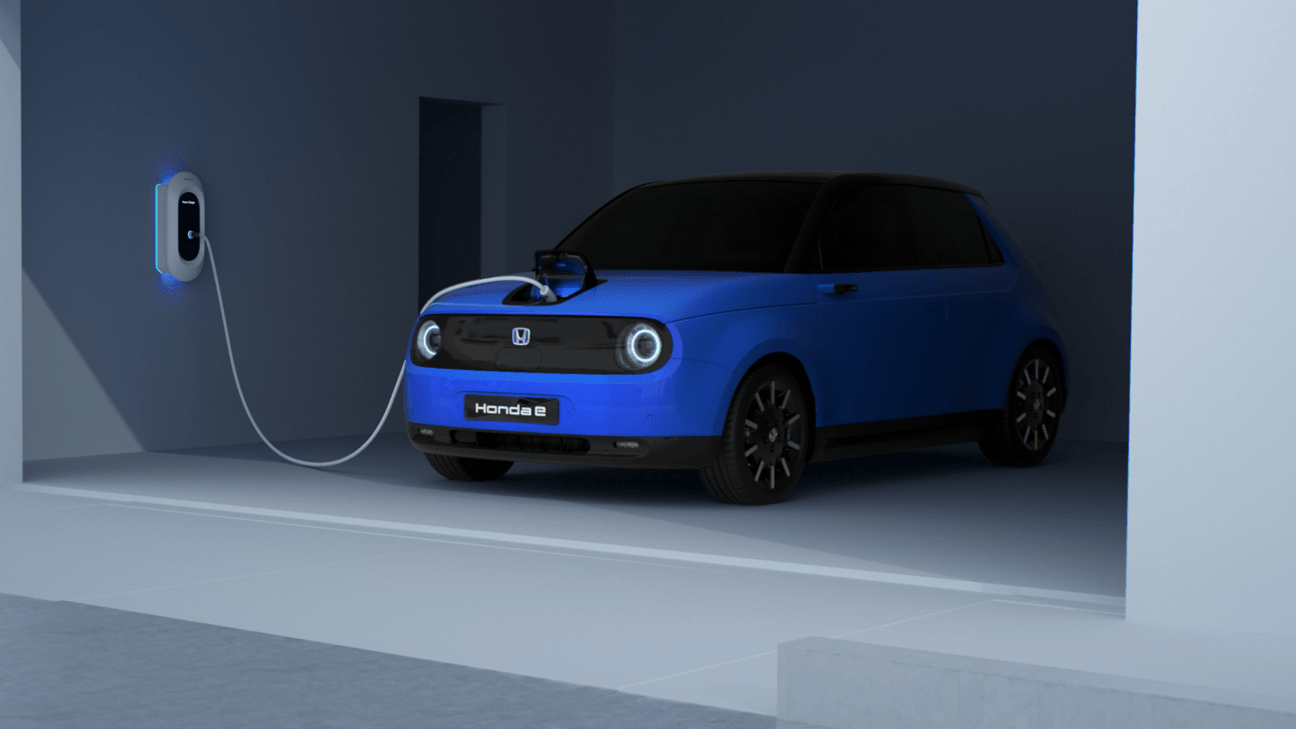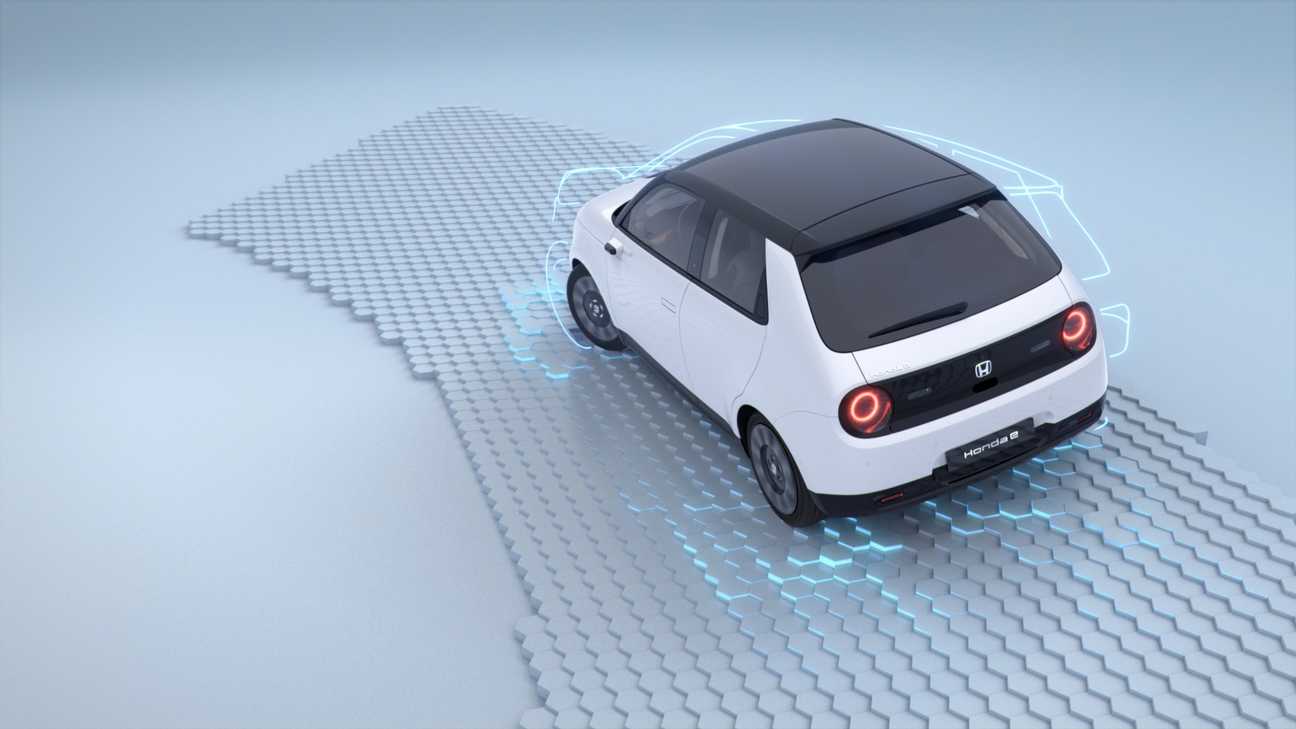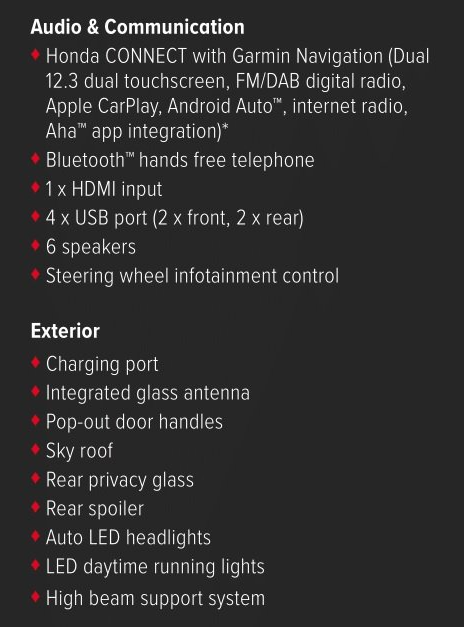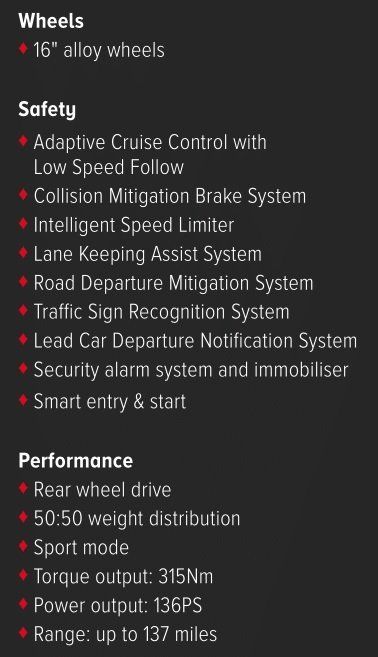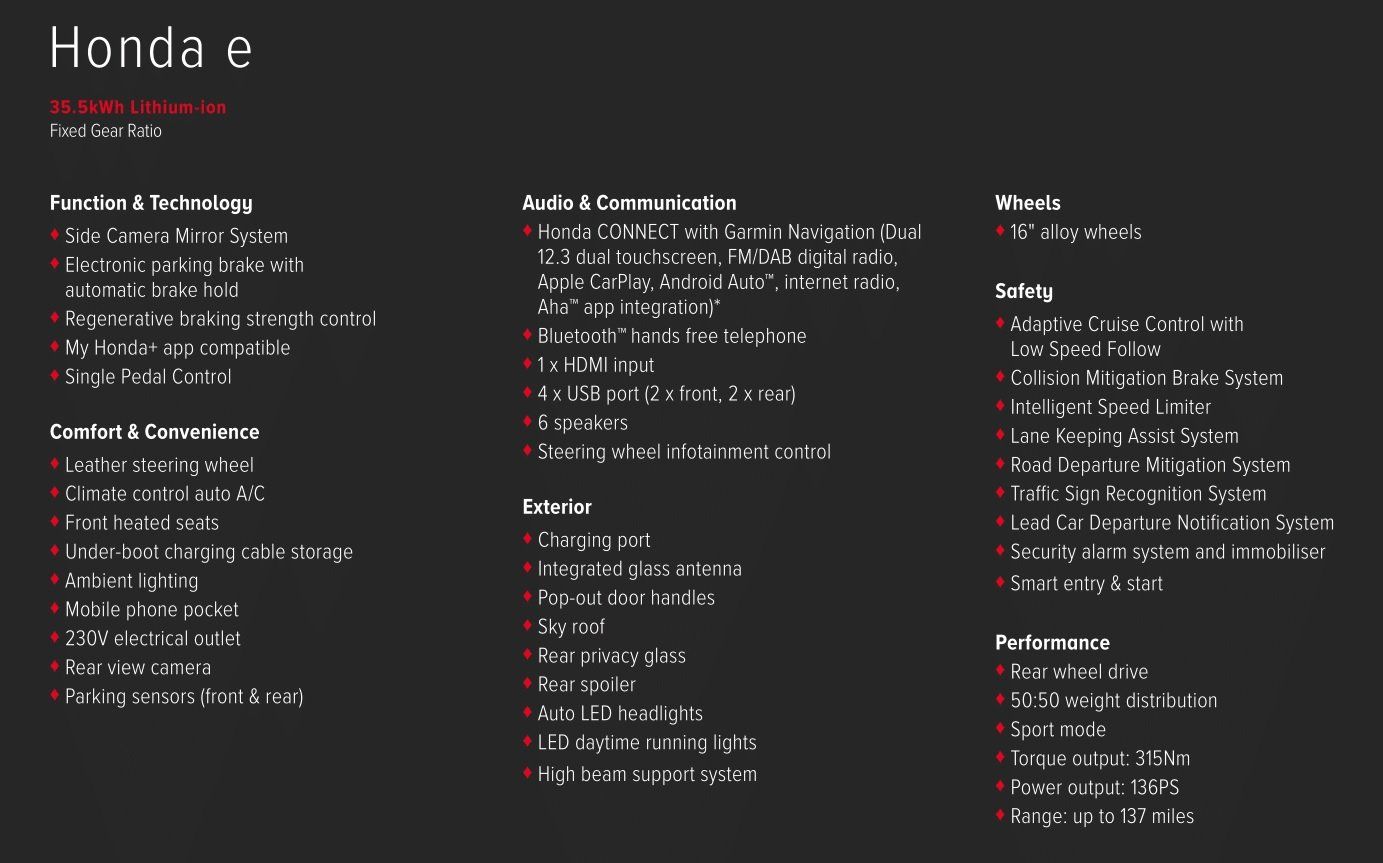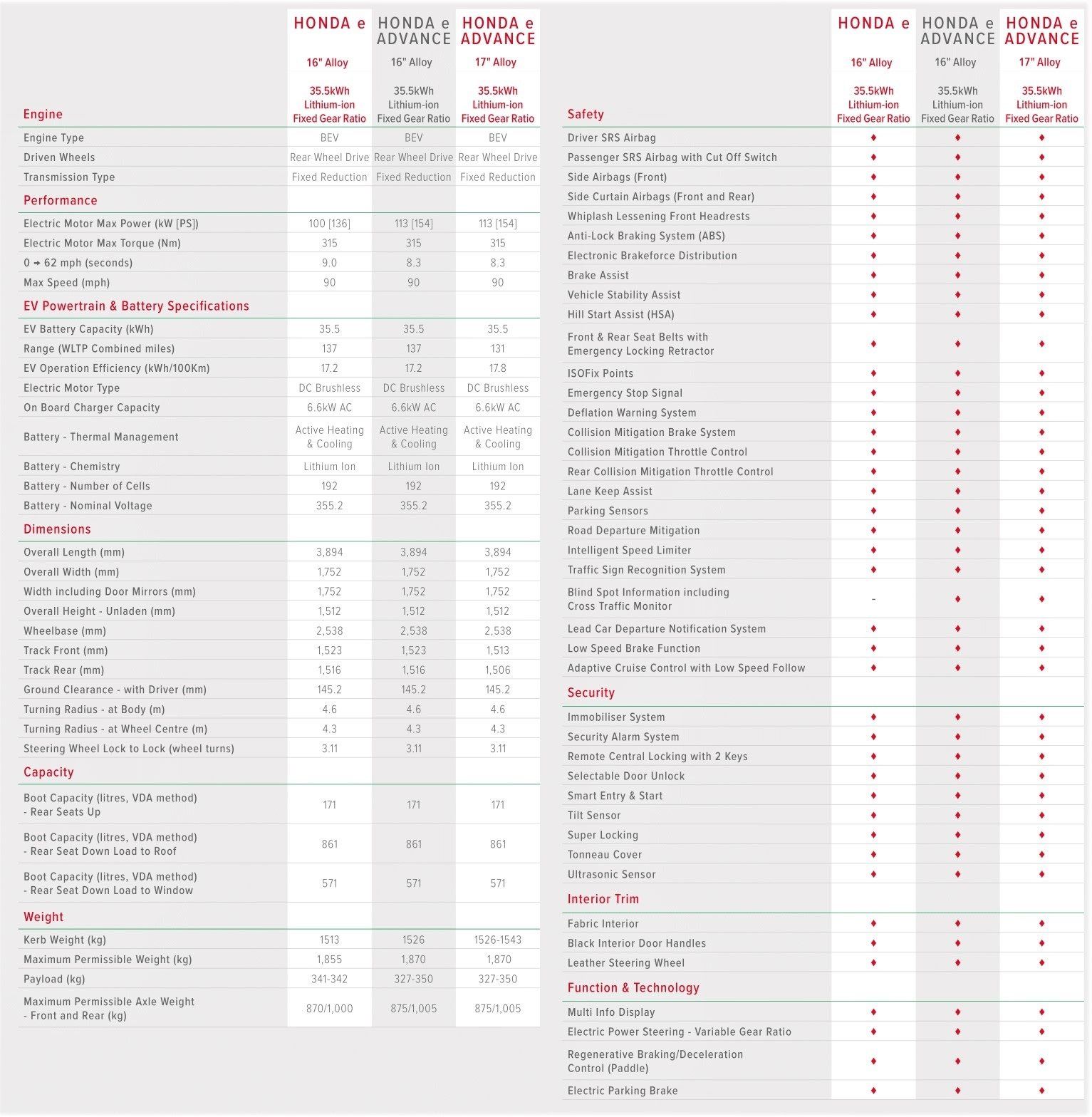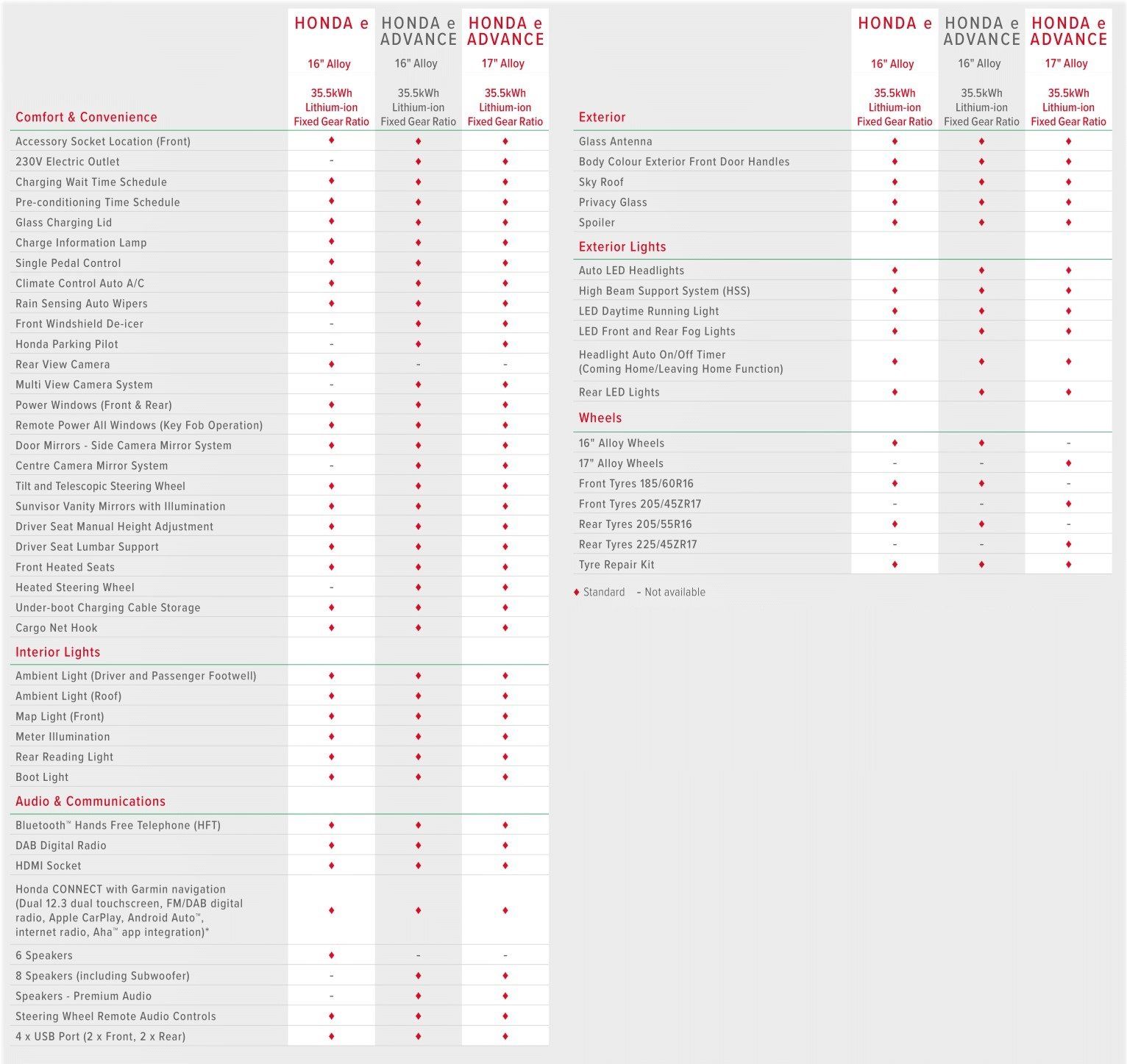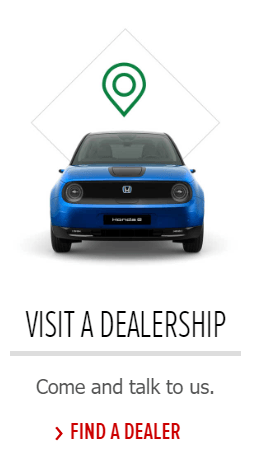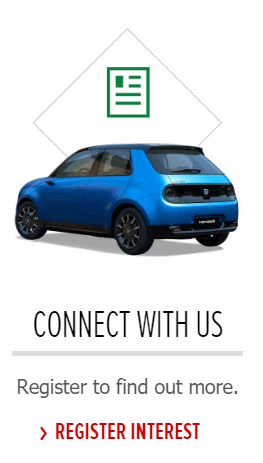Lead Car Departure Notification System
Alerts you when driver in front has moved ahead from standstill. The Honda e will let you know that way ahead is clear.
Collision Mitigation Throttle Control
Preventing a sudden acceleration following cars in traffic, the Honda e will know if the car in front has suddenly stopped. For example, at a roundabout where the driver in front may change their mind and apply the brake.
Low Speed Brake Function
If you're close to an object that you may not have noticed, the Honda e will apply emergency braking while driving at low speed.
SIZE MATTERS
How big is an electric car’s battery?
Like the variety of cars they power, the batteries in electric vehicles vary in size. They’re often packed away under the floor, taking up all the area beneath where everyone sits. Some will be rectangular shaped, others may resemble a ‘T’ section when viewed from overhead. And the larger they are, the heavier they will be.
In the new Honda e, the battery is beneath the middle of the car’s floor and it powers an electric motor that is located under the boot floor.
UNDERSTAND THE POWER
How does an electric car’s battery work?
The modern battery in an electric car is lithium-ion. Inside the cell, positively charged lithium ions are carried by a liquid electrolyte from the anode to the cathode through a separator. This movement results in the discharge of an electrical current. And that electricity is used to power the motor or motors that drive either two or all four wheels.
FULLY CHARGED
Maintaining the battery
The greatest potential convenience about an electric car is that it can be charged whenever and wherever it is parked. This saves drivers from going out of their way to find a charging station. The power will be drawn from the grid. That means the sustainability will vary according to the energy provider. At home, the battery is best charged using a dedicated ‘wallbox’. The wallbox typically delivers a charging rate of 6.6kW, which means a car like the Honda e, which has a 35.5kWh battery, would be charged from low warning to 100 per cent in around 4.1 hours. Using a more powerful 50kW rapid charger at a public location, the Honda e’s battery would go to 80 per cent charge in just 31 minutes.*
*Charge times are measured from the low battery warning indicator.
WHAT LIES BENEATH
The Honda e's battery
Designed from the ground up, the Honda e is the first Honda to be built on a purpose-designed platform for electric vehicles. The stylish electric car features a water-cooled 35.5kWh lithium-ion battery that can be charged using either Type 2 AC connection or a CCS2 DC rapid charge.
The Honda e will be capable of travelling up to 137 miles before drivers will need to recharge the battery. To ensure the Honda e has a responsive feel on the road, engineers have centred the battery low in the platform, giving the compact car perfect 50:50 weight distribution and an excellent centre of gravity.
- Honda e Specifications -



